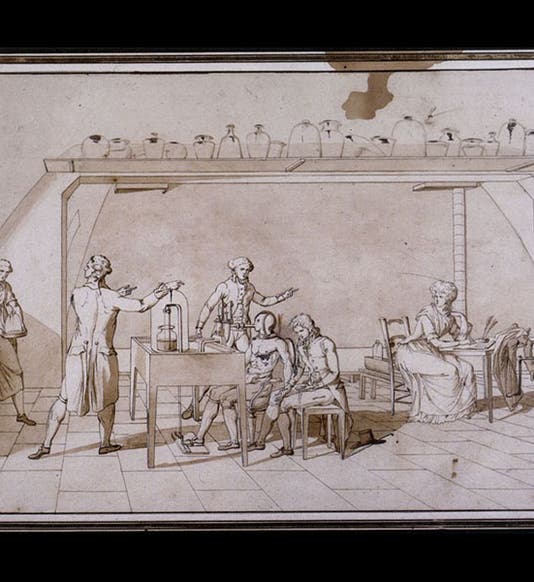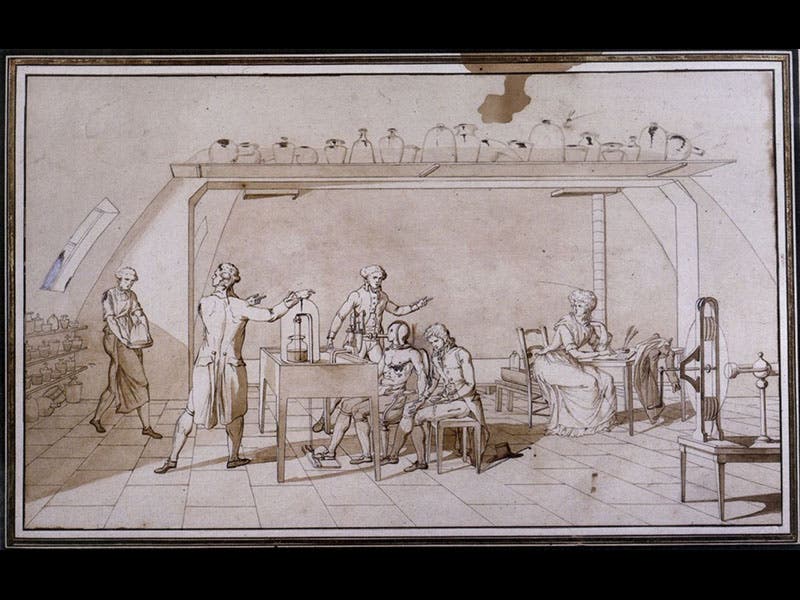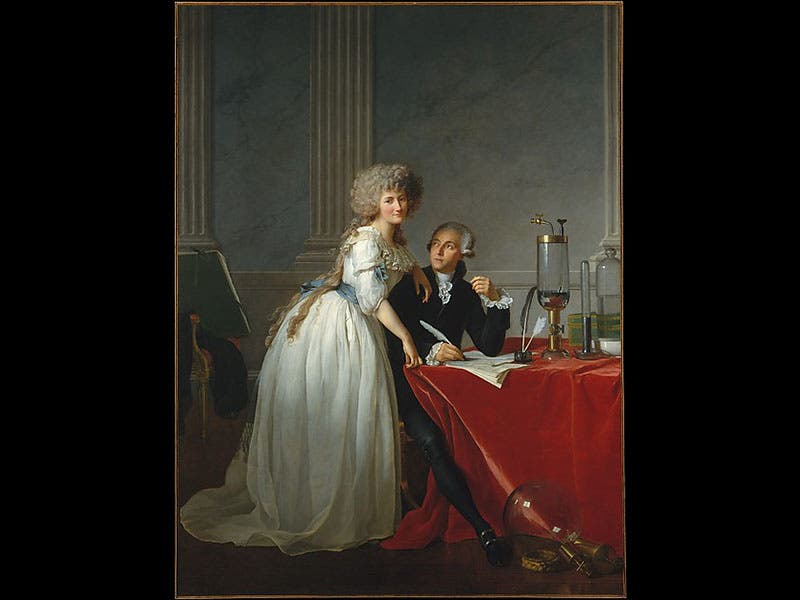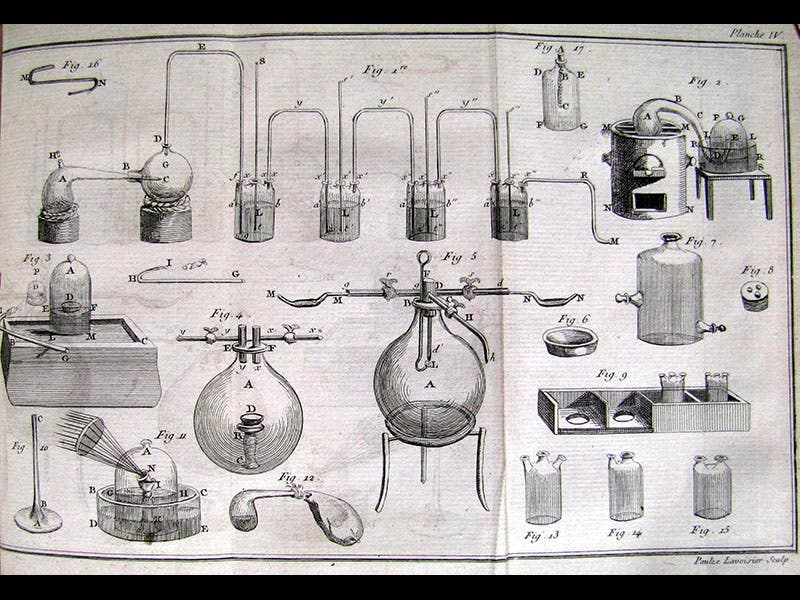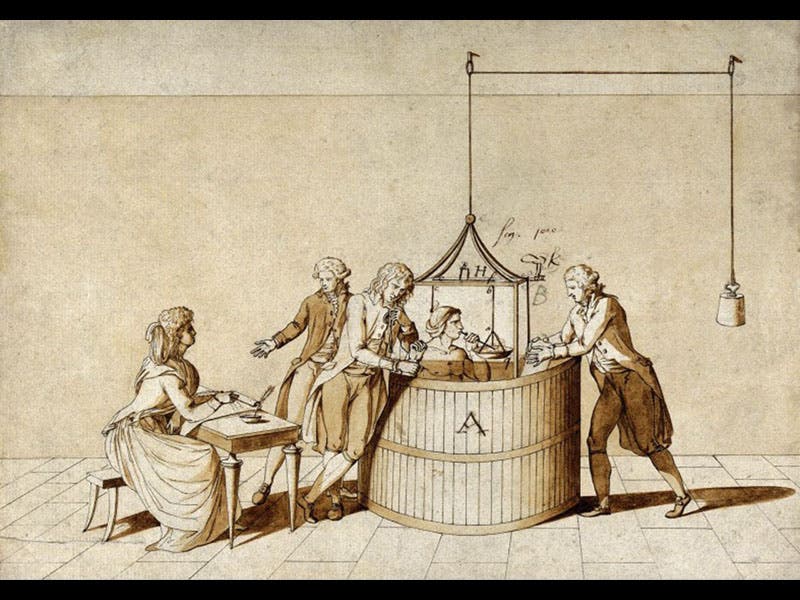Scientist of the Day - Marie-Anne Paulze
Marie-Anne Pierette Paulze, better known as Madame Lavoisier, was born Jan. 20, 1758. She was married to Antoine Lavoisier in 1771, when she was just 12 years old; he was 28. Lavoisier was soon appointed to a government post at the Arsenal and began his rise through the chemical ranks. Marie was his competent assistant in nearly all of his experiments; in addition, she provided the illustrations for most of his published works, including the revolutionary Traité élémentaire de chemie of 1789 (third image). Life was good for about twenty years, and then it got very bad. Lavoisier, because of his high government position in the tax agency Farmers General, was accused of being a traitor during the Reign of Terror in 1794. Marie did her best to defend her husband, pointing out--quite correctly--that Lavoisier was the greatest chemist that France had ever produced, but her efforts were of little use, and Lavoisier was guillotined on May 8, 1794, on the same day that her father was also executed. It doesn't get much worse than that.
Marie was outraged that other high-ranking scientists, such as Gaspar Monge and Count Fourcroy, had not come to her husband's defense, and historians have shown that her bitterness was well-grounded. Marie was 36 when Antoine was executed; she would live another 42 years and became quite prominent in Parisian society. She even briefly married another scientist, the American/Englishman/Bavarian whirlwind, Benjamin Thompson, Count Rumford, but their marriage was tempestuous and short-lived, their discord no doubt aided by the fact that even in her new marriage, she refused to be called by any other name than Madame Lavoisier, for she carried on the battle for Antoine's reputation until her death. There is a wonderful portrait of Marie and Antoine by Jacques David in the Met in New York, in which Marie takes center stage, as she often did (second image). Some of her drawings of Lavoisier’s experiments also survive, in which she often portrayed herself at the sketch table (first and fourth images).
Dr. William B. Ashworth, Jr., Consultant for the History of Science, Linda Hall Library and Associate Professor, Department of History, University of Missouri-Kansas City. Comments or corrections are welcome; please direct to ashworthw@umkc.edu.

